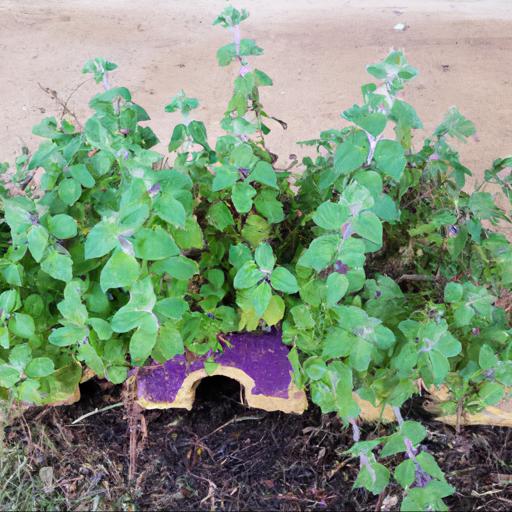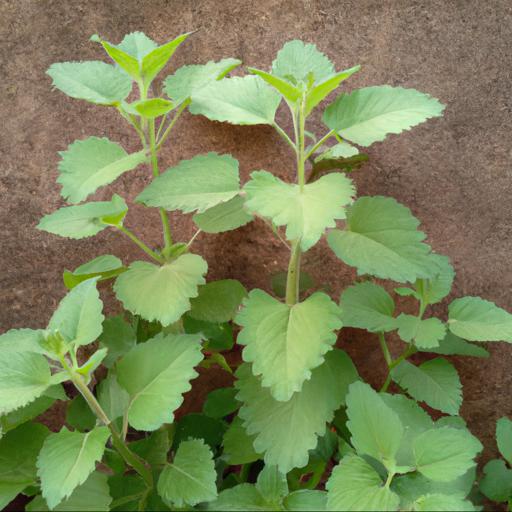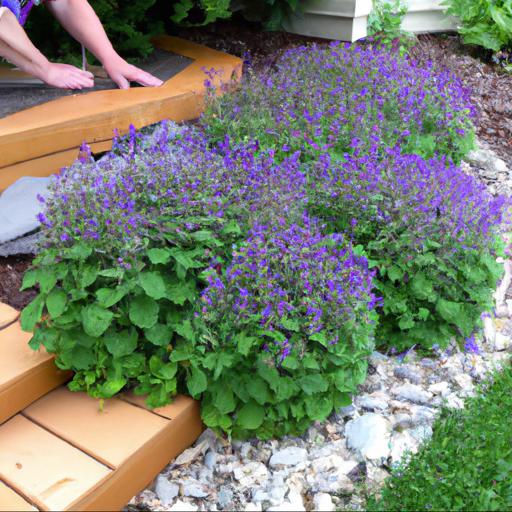Nepeta six hills giant is a stunning variety of catmint, a hardy perennial herb. The plant is known for its large, fragrant, lavender-blue flower spikes, which can reach up to two feet in height.
It’s an excellent choice for gardeners looking to add a bit of color and interest to their landscape. This variety of catmint is easy to grow and care for, and is perfect for those who want a low-maintenance plant that will bring beauty and fragrance to their garden. Its long blooming season and drought tolerance make it an ideal choice for gardeners in drier climates.
Whether you’re looking for a showy addition to your garden or just want to enjoy the sweet smell of its flowers, Nepeta six hills giant is a great choice.
Growing and caring for nepeta six hills giant

A garden expert’s guide to growing and caring for Nepeta Six Hills Giant will provide all the essential advice needed for successful cultivation. As a member of the mint family, this hardy perennial is a great choice for all levels of gardeners, thanks to its long-flowering nature and being able to thrive in various conditions. Grown from seeds or started as plants, Nepeta Six Hills Giant prefers a sunny or lightly-shaded position in moist, well-drained soil, and will keep turning out blue-purple blooms, especially when divided every two or three years.
Because of its preference to dry out between watering, this makes it a great selection for drought-prone areas, container gardening, and even for xeriscaping. When it comes to caring for Nepeta Six Hills Giant, regular trimming that is done after flowering will help to keep the growth under control and maintain its size.
Deadheading can also take place during summer, to promote additional blooms throughout the growing season. Aphids, Slugs, and Snails are common pests of this type, but if food grade diatomaceous earth and neem oil are used they shouldn’t be a problem. Some gardeners may choose to plant other companion plants – such as lavender, coneflower, and salvia – to help keep pests away, while providing a natural habitat for garden wildlife, such as bees and ladybugs.
Overall, Nepeta Six Hills Giant is a hardy perennial that can bring color, life, and personality to any garden. With its easy-care nature and long blooming season, gardeners of all skill levels will be able to enjoy the beauty and benefits of this wonderful flower.
Benefits of nepeta six hills giant

Nepeta Six Hills Giant is an exceptionally beautiful garden plant that helps create a stunning and lush outdoor space. With its stately and elegant appearance, the plant helps to enhance the appearance of any garden. This plant is a member of the mint family, and it can grow up to three feet tall.
Its luxurious foliage is a welcomed addition to most gardens and its trailing vines create a cascading effect when surrounded by other plants and gardens. The Nepeta Six Hills Giant provides numerous benefits to gardeners.
Firstly, the plant is drought-tolerant and needs minimal watering. This can be beneficial during periods of drought and can help conserve precious water throughout the growing season. Secondly, the plant has high resistance to deer and other pests, making it perfect for a garden that may be frequently visited by wildlife.
As well as this, the plant is easy to care for and requires minimal pruning and maintenance. This can save gardeners plenty of time and energy.
Finally, the Nepeta Six Hills Giant produces beautiful lavender and white blossoms that can offer a gorgeous burst of color and life to a garden. The flowers are a magnet for butterflies and pollinators and the scent is wonderful, especially during the hot summer months. This can make for a pleasant and fragrant experience when engaging in the gardenIn summary, Nepeta Six Hills Giant is an exceptional garden plant that provides beauty and ease of maintenance for any garden.
Its drought-tolerant and pest resistant characteristics make it a great choice for areas plagued by water restrictions or wildlife. This plant needs minimal pruning and with the added bonus of gorgeous and fragrant flowers, the garden will be a haven for life and beauty.
How to use nepeta six hills giant in landscaping

Nepeta six hills giant is an excellent option for adding texture, color and fragrance to your landscape. With its bright blue flowers, eye-catching foliage, and delightful scent, it’s no wonder that this hardy perennial is gaining in popularity for gardeners.
Whether you’re a beginner or a seasoned green thumb, nepeta six hills giant can be a great addition to your landscape. In terms of aesthetics, this plant has a lot going for it. With soft green foliage and spires of bright blue flowers, it has a very graceful look.
Although the flowers usually come in shades of blue, they may also have some flecked-pink accents. This adds a unique touch to the look and feel of your landscaping.
The foliage typically grows up to 2 feet tall, allowing you to use it as a middle layer in your garden beds. The real beauty of nepeta six hills giant lies in its fragrance. With its sweet, minty aroma, this plant can attract an array of butterflies and hummingbirds to your garden.
Even without the flowers in bloom, it still emits a pleasant scent that acts as an alluring welcome to visitors. This hardy plant is also surprisingly easy to care for and can be planted in a wide range of conditions.
For best results, ensure the plant is planted in well-drained soil and is watered regularly. It’s also important to fertilize it twice a year to ensure it stays healthy. Overall, nepeta six hills giant is an excellent choice for landscaping.
Not only does it add a splash of color to your garden, but it also brings a wonderful fragrance that can provide a tranquil atmosphere. With its hardy nature and ease of care, it’s no surprise that this plant is quickly becoming a favorite among gardeners.
Common problems with nepeta six hills giant and how to solve them
:Nepeta six hills giant is a fantastic flowering perennial that has become popular amongst UK gardeners over the last few years. It is an attractive variety that produces silvery-blue flowers in the early summer until late summer, when the blooms dry up and the foliage turns orange. However, it can sometimes be difficult to keep the grass looking its best, and there are a few common problems that gardeners encounter.
In this article, we’ll have a look at the most frequent issues and how you can resolve them. First of all, it’s important to note that Nepeta six hills giant is particularly susceptible to drought, so it’s crucial to make sure that the soil is sufficiently moist.
When watered regularly, the grass can develop deeper roots and become stronger. A general rule of thumb is to give the grass 1-2 inches of water a week, depending on levels of rainfall and the severity of the heat. Additionally, if you’re planting it in a container, make sure to choose one with a drainage outlet to avoid root rot.
Secondly, it’s important to provide a well draining soil for Nepeta six hills giant that is rich in organic matter. This will help the plant access the nutrients it needs to thrive and prevent the soil from becoming waterlogged when you water it.
When planting in raised beds or pots, it’s advisable to use a mixture of compost or peat based to get the best results. Finally, you should also keep an eye out for pests, like snails and slugs, that can attack the leaves of the plant. If these pests become a problem, there are a number of organic solutions you can deploy.
One reliable option is to spread a generous layer of coffee grounds around the plant. As the coffee grounds break down, they will create a protective barrier that will discourage pests and encourage the grass to thrive.
In conclusion, keeping Nepeta six hills giant in your UK garden can be a rewarding experience, although there can be a few hiccups along the way. Whether it’s providing the grass with enough water, choosing the right soil, or staving off pests, there are a number of steps you can take to ensure the grass stays healthy and happy. With the right approach, you can create a lush display that will last for months.
Our video recommendation
Conclusion
Nepeta six hills giant is a popular ornamental perennial plant that is native to the Mediterranean region. It is known for its large, fragrant, silver-green leaves and clusters of lavender-blue flowers. This hardy plant is easy to grow and requires minimal care, making it a great choice for gardeners of all levels.
It is also deer resistant and drought tolerant, making it an ideal choice for dry, sunny locations. With its striking foliage and long-lasting blooms, Nepeta six hills giant is sure to add beauty and interest to any garden.
FAQ
What is the scientific name of Nepeta six hills giant?
The scientific name of Nepeta six hills giant is Nepeta x faassenii.
Where is Nepeta six hills giant native to?
Nepeta six hills giant is native to the Mediterranean region.
What type of soil does Nepeta six hills giant prefer?
Nepeta six hills giant prefers well-drained, sandy soil with a pH range of 6.0-7.5.
How tall does Nepeta six hills giant grow?
Nepeta six hills giant typically grows to a height of 2 to 3 feet.
What type of climate is best for Nepeta six hills giant?
Nepeta six hills giant thrives best in a temperate climate with moderate temperatures and plenty of sunshine.
What type of pests or diseases does Nepeta six hills giant attract?
Nepeta six hills giant is susceptible to powdery mildew, rust, and aphids.

